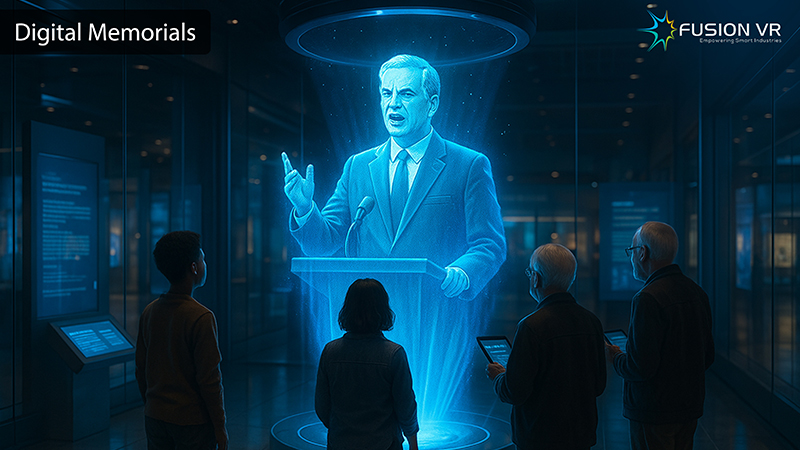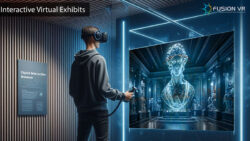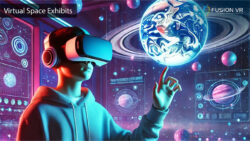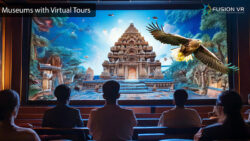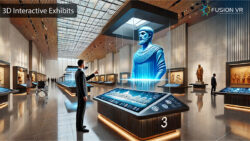In this digital age, the recognition of legendary leaders has moved far beyond dull statues, books, and documentaries. Immersive digital memorials, built with the power of new technologies, such as Virtual Reality (VR), Augmented Reality (AR) and Stereo 3D, are capable of imparting a true interactive experience with history. With these technologies, history comes alive, allowing future generations to experience the stories, values, and leadership of iconic figures like never before.
The Evolution of Memorialization
Traditionally, memorials existed in static forms, such as statues, plaques, or museums. Somewhat distant from modernity, all these forms are extremely effective yet limited by their inability to really engage the audience. With the advancement of the digital revolution, dynamic experiences have emerged in which history is not an object of observation but rather one of immersion.
Digital memorials blend storytelling, interactivity, and technology to create a living legacy. In combining the physical with the virtual, these memorials make history accessible, interactive, and memorable.
Virtual Reality: Walk Through History
In a way, virtual reality places users in exquisitely designed atmospheres representing historical settings. Users may be found in the office of some leader looking at the historic moment or in a reenactment of some important speech. VR allows users to:
- Explore Recreated Environments: Step into the chambers of revolutionary leaders or iconic meeting halls
- Witness Key Events: Experience history unfold, such as the signing of declarations or pivotal addresses
- Interact with Digital Doubles: Engage with AI-powered avatars of leaders capable of answering questions or providing information based on documented history.
Augmented Reality: Blending the Real and the Virtual
With Augmented Reality (AR), digital content seamlessly integrates with the real world, creating an immersive and interactive experience. This makes AR one of the most effective mediums for engaging memorials in AR VR museums, public spaces, and historical landmarks. Through AR:
- Bring Stories to Life: Point your phone’s camera toward a statue or painting, and an animated representation of the leader begins narrating their story.
- Interactive exhibits: Now interact with a 3D hologram that will depict the contributions and achievements of the leader.
- Personal Experiences: Make the journey focus more on a particular dimension of the life or age of the leader.
Stereo 3D and Holography: Realistic Encounters
3D stereo and holography take realism to the level beyond belief. The possibilities these technologies can unleash are:
- Life-like Reproductions: View 3D holograms of leaders giving their famous speeches before an audience.
- Intricate Visualization: Look closely, from the glimmer in their eyes to the textures of their garments.
- Group Connections: Events can be organized in which groups of people can witness the presence of a hologram at the same time.
Artificial Intelligence: Breathing Life into Avatars
AI can throw live action into a memorial, rendering it even more interactive. Training the AI in some historical records, speeches, and writings will allow for creating a virtual avatar that would:
- Answer Queries: Authentically informed on the basis of historical facts.
- Narrate Stories: Present to different age groups and interests different storytelling.
- Adapt Content: Flexible over time to include new historical knowledge or interpretations.
The Impact on Education and Inspiration
Digital memorials are not solely about preserving the past but to draw inspiration for the future. They serve as valuable educational tools, making history interesting for students and accessible to various audiences. Moreover, they present the ideals of yesteryear’s leaders and encourage individuals to practice them in today’s context.
Challenges and the Way Forward
The potential of digital memorials is substantial, yet issues such as historical correctness, accessibility, and data privacy must be accounted for. Cooperation among historians, technologists, and educators is necessary to create memorials that are ethical and make a difference.
Conclusion
In this digital age, memorials will never be erected in the future like the old-fashioned static and dusty memorials to the greats of yesteryears. Instead, they will become active interactive experiences that speak to how modern humans feel. VR, AR, XR, Stereo 3D, and AI, would not only keep alive the legacies of great leaders but will also fully rejuvenate and revitalize the great souls in the minds of generations to come, making the whole world witness them again. These admirable technologies would be the best bet in such a world that houses an ever-increasing population of experience-seekers to meet the nostalgia that connects history with innovation, with the hope that the past will not be forgotten in the future.

